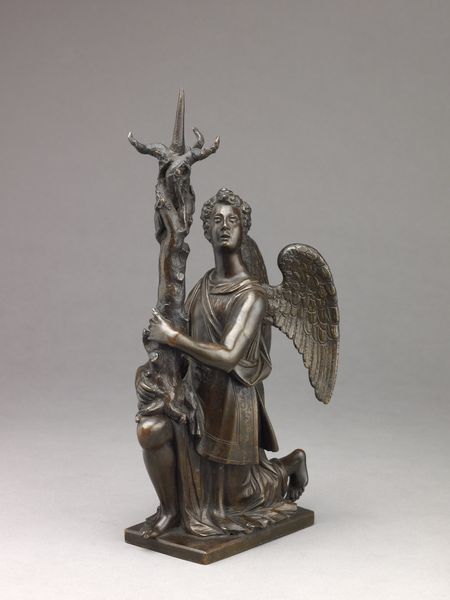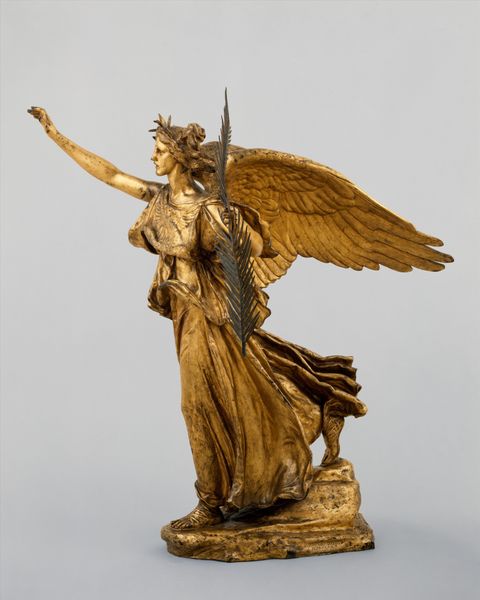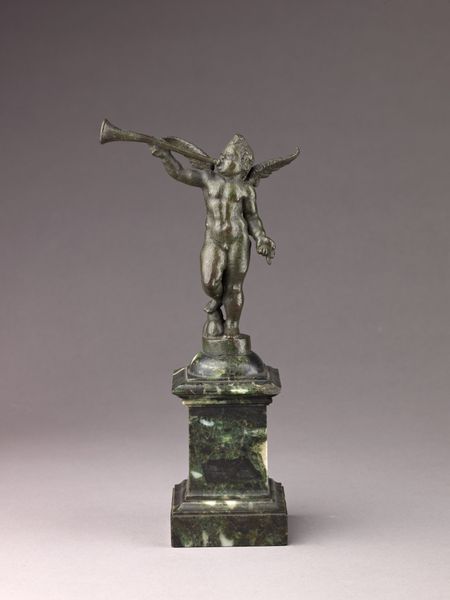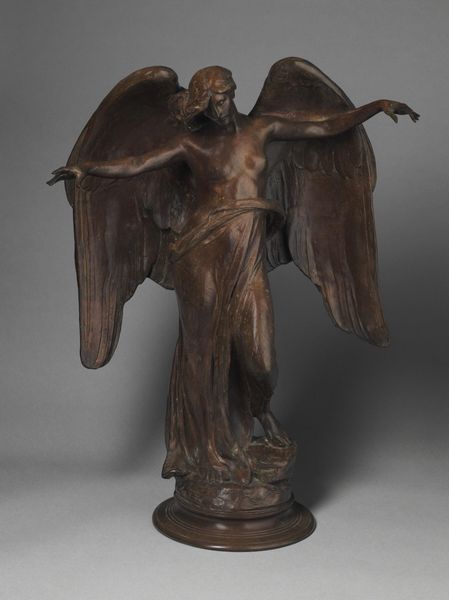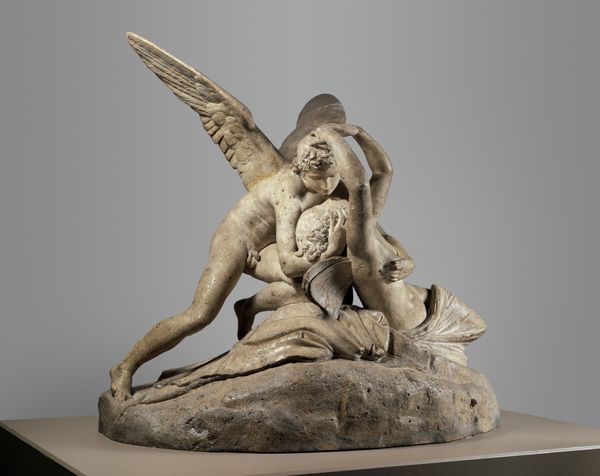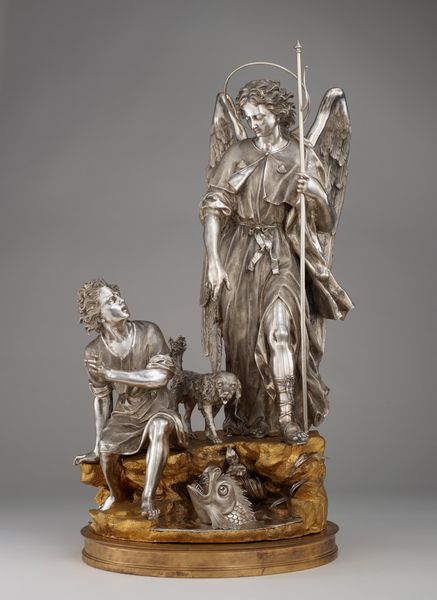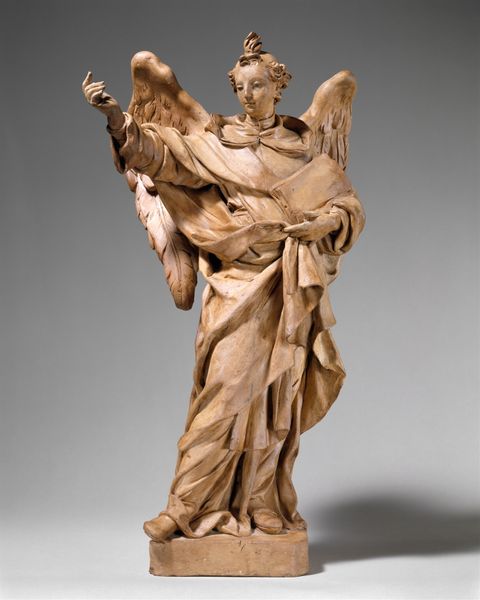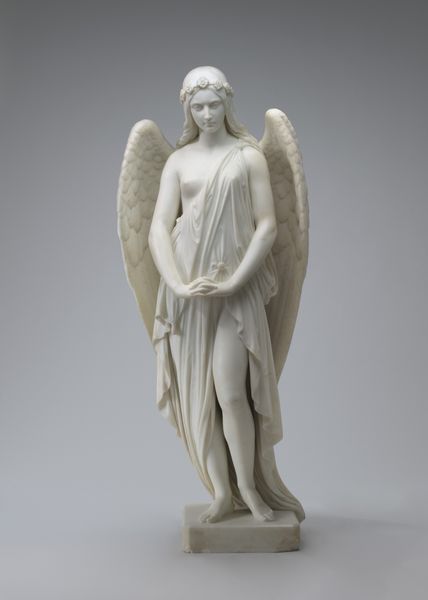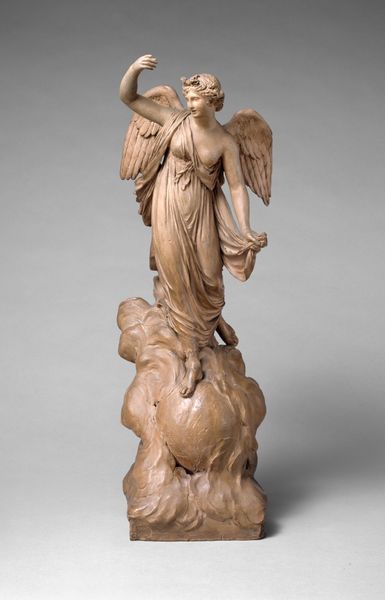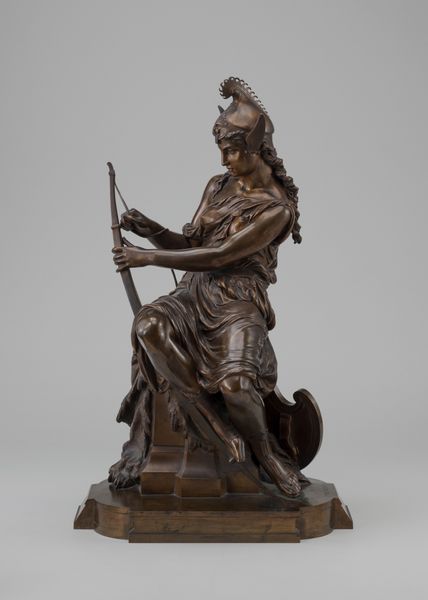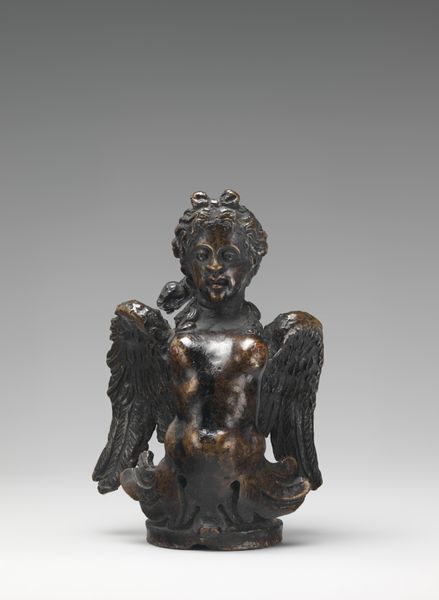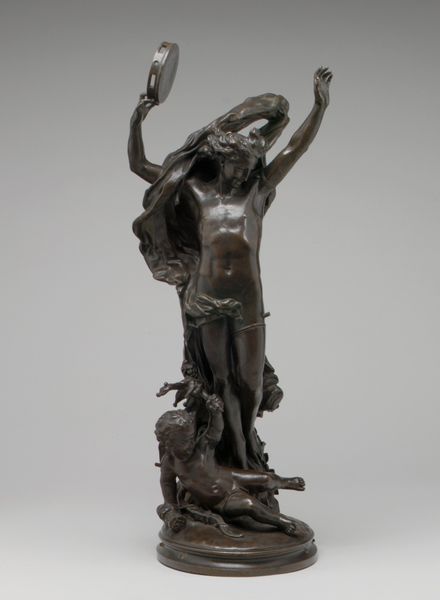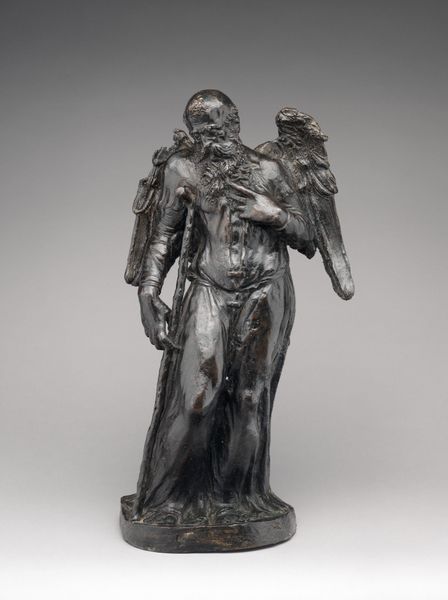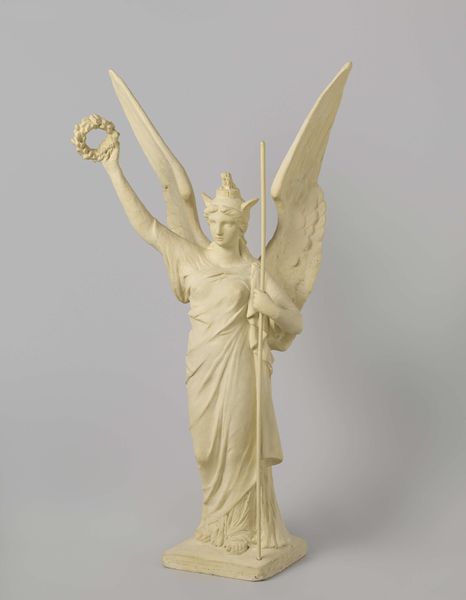
Candlestick in the Form of a Kneeling Angel 1587 - 1603
0:00
0:00
bronze, sculpture
#
sculpture
#
bronze
#
mannerism
#
figuration
#
sculpture
#
angel
Dimensions: H. 27.5 cm
Copyright: Public Domain
Editor: This is the bronze sculpture, "Candlestick in the Form of a Kneeling Angel" made between 1587 and 1603 by Giambologna. The angel's wings are impressive, but I am most curious about the twisted shape of the candlestick itself, resembling a barren tree. How do you read into this piece? Curator: From a materialist perspective, let’s consider bronze itself. It’s a durable material, historically associated with status and permanence. Casting this form - an angel supporting what you astutely noted is a barren tree which then functions as a candlestick, would require a high level of technical skill. Bronze production, especially during the late 16th century, involved specific labor practices and trade routes. Who were the foundry workers involved in creating this object, and what were their lives like? These are vital questions. Editor: That's fascinating. I hadn't considered the labor aspect at all. I was more focused on the visual representation of the angel and the tree. Curator: Exactly. Traditional art history might emphasize the artistry and symbolism of the angel figure itself, linking it to religious narratives. But what about the tree? Its shape shows both artistic style and the artist´s technical abilities regarding bronze as a support. Its role has become one for functional use. Are we to contemplate the angel's humble position? What kind of workshops existed at that time, how were they structured, and were such types of objects common or produced by a niche craftsperson? Editor: It’s intriguing to consider the original context. Was this candlestick meant for a wealthy patron's home, reflecting their refined taste and access to skilled labor? Or was it made for a religious purpose? Curator: Precisely. Understanding its consumption is key. It moves us beyond aesthetics. Furthermore, we may reflect upon its multiple cultural usages from the religious domain to everyday purposes such as illumination within an interior. Editor: I hadn’t really thought about that intersection of faith and function before. Thinking about materials and labor definitely changes how I see this sculpture. Curator: Indeed. By thinking of this piece as the outcome of human agency in its labor processes, in material transformation, in circulation, and consumption we enrich our experience.
Comments
No comments
Be the first to comment and join the conversation on the ultimate creative platform.
